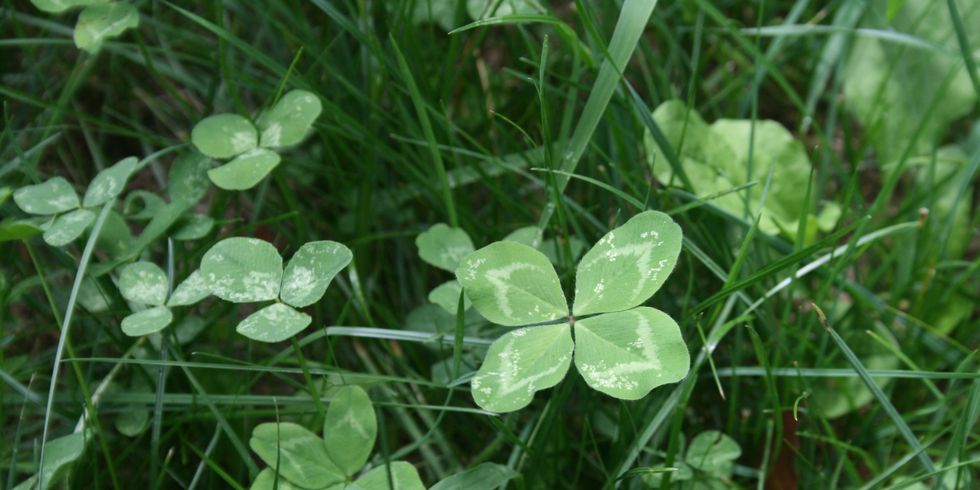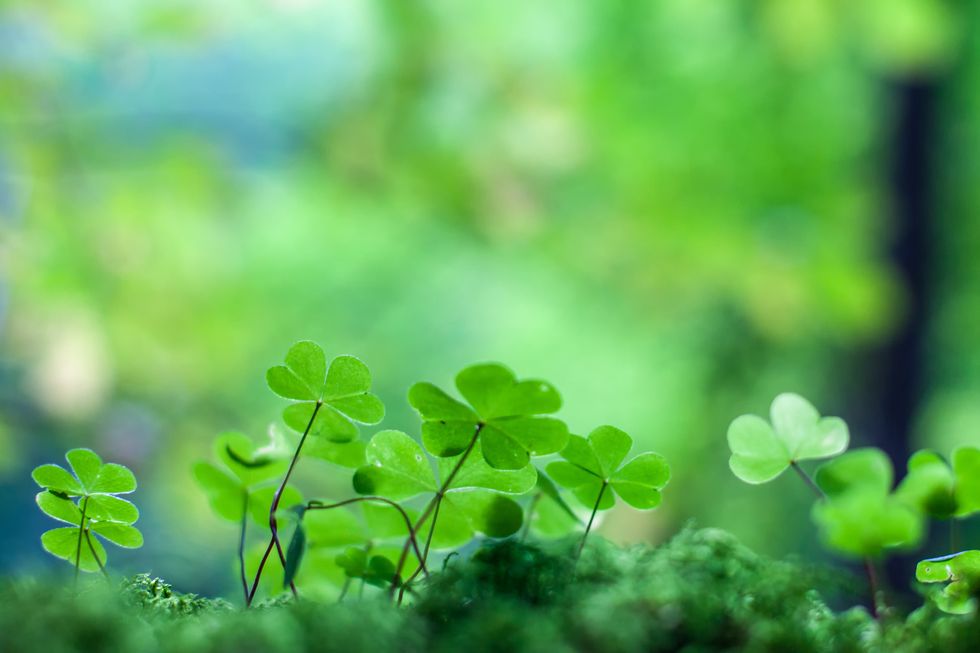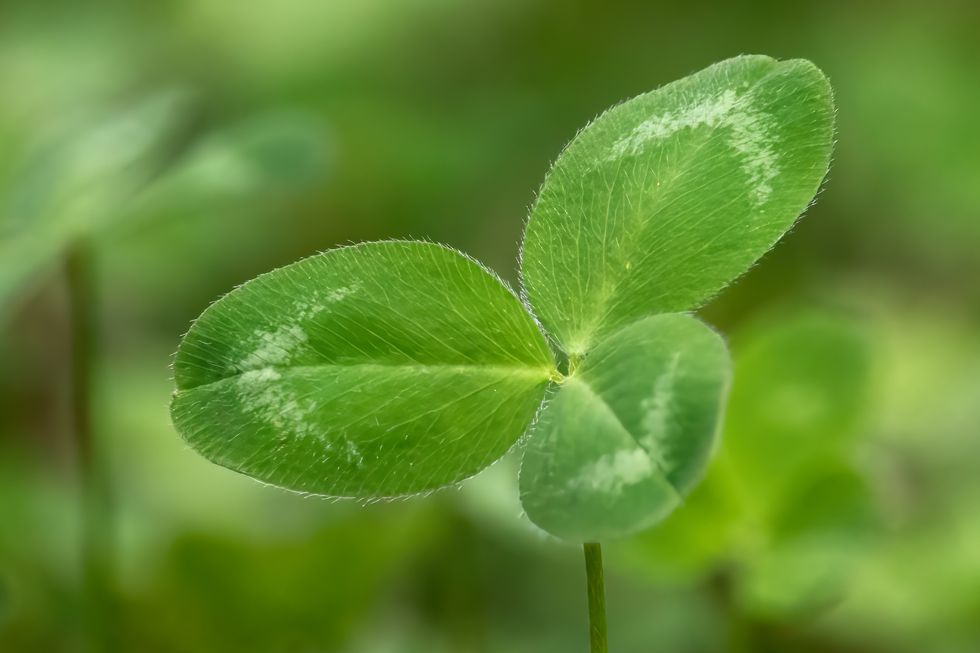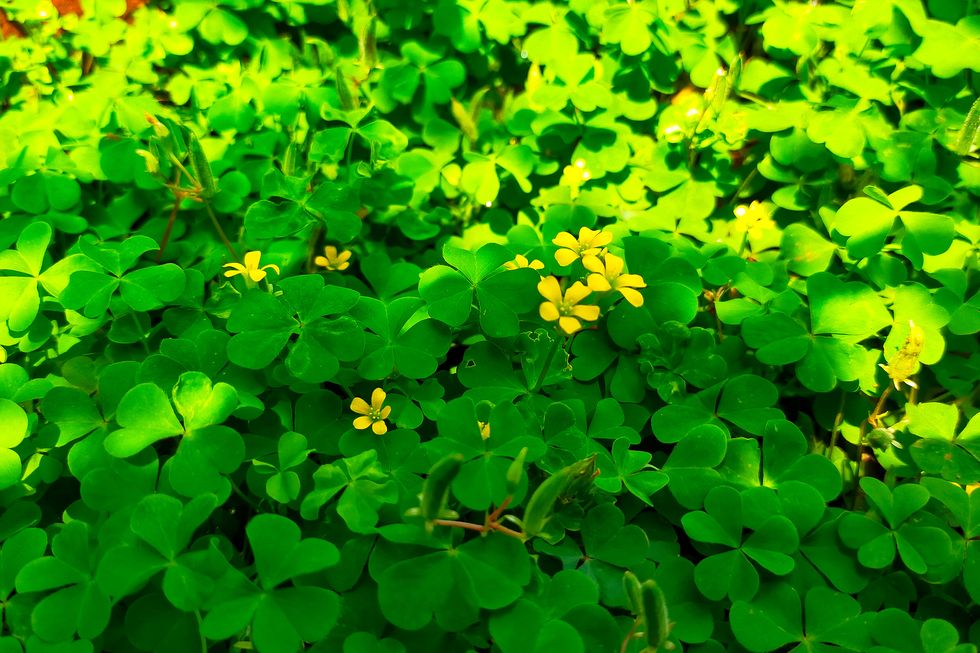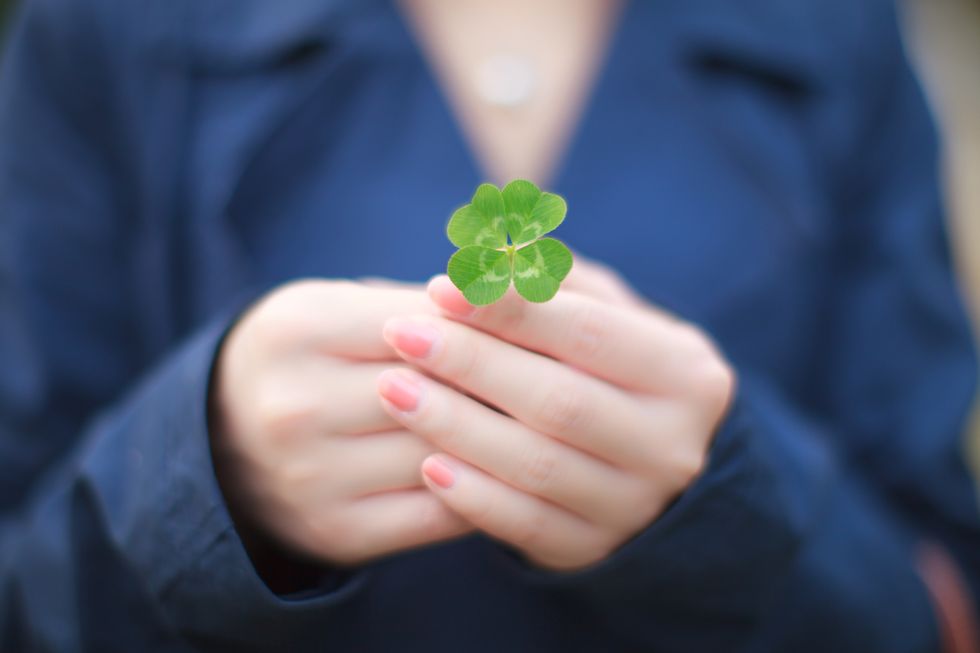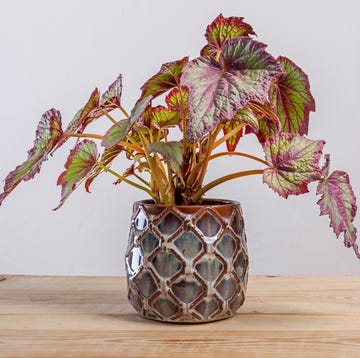Whether you want to grow a clover lawn or think of clover as a weed, absolutely everyone knows a four-leaf clover brings good luck! You may have heard that this belief originated with the ancient Celts and Druids, who used clover to ward off evil spirits or to see fairies. But the truth behind the clover's history as a good-luck charm is as elusive as a leprechaun.
Despite wishful thinking, we don't have reliable information about the mysterious Druids. "We don't know what the Druids thought about shamrocks, or if they thought about them at all,” says Jennifer Paxton, PhD, a professor of history of the medieval British Isles and Ireland at the Catholic University of America and a lecturer of Wondrium by the Great Courses. "We have no records and know almost nothing about them, so we can project almost any belief on them."
It's actually not unusual for these sorts of legends to have a murky past. "The four-leaf clover idea likely originated in folklore, but it's hard to say when it first popped up. We often don't know how quickly a folk custom catches, so no one remembers how or when it started," adds Paxton.
What we do know is that the four-leaf clover has been a symbol of luck for centuries. Just to name a few examples, it's mentioned in a book from the 1600s, it was carried as soldier's good-luck charm in World War I, and it's mentioned in a scholarly journal about the beliefs of college students in the 1920s. Even today people search diligently to find one (more on how to do that below).
Read on to learn some fun facts about four-leaf clovers, good luck, and how to find your own.
Why Clover Is Associated With St. Patrick’s Day
The reason for the clover's association with St. Patrick, a religious leader who lived in the fifth century, isn't clear. Although it's been said St. Patrick used the three-leafed clover to teach the Irish about the Trinity in the Christian faith, that's unlikely, says Paxton.
That's because there's no mention of clover (or shamrocks) in St. Patrick's own writings or in biographies written about him in later centuries. In fact, the idea about the supposed lesson doesn't show up until 1726, when an Irish minister and amateur botanist wrote about the Irish custom of wearing shamrocks on St. Patrick's Day, says Paxton. By then, the tradition may have been passed on for centuries, though it probably wasn't an actual event in St. Patrick's life.
Why Four-Leaf Clovers Mean Good Luck
It's not really clear why four-leaf clovers have come to mean good luck. Paxton says the words happy and happenstance, which means luck, are related, meaning a happy occurrence may bring you luck. But that's not something you can verify, and there are plenty of other theories.
It could be because of their rarity. In fact, UGA clover researchers have discovered that a four-leaf clover occurs due to an uncommon genetic mutation: There must be a unique combination of a recessive gene and environmental factors such as specific temperatures to create a four-leaf clover.
You’ll see guesstimates of how rare four-leaf clovers really are, such as 1 in 10,000 or 1 in 100,000. But it has never been accurately calculated. "I have yet to come across a reliable, peer-reviewed report where they performed surveying in a variety of environments to give us accurate statistics," says Vincent Pennetti, a PhD candidate studying clover and plant breeding and genetics at the Parrott Lab at the University of Georgia. "But the trait that produces them is recessive, so if you find one, you definitely found something rare."
Are Shamrocks and Clovers Are the Same Thing?
It depends on whom you ask! The word shamrock comes from the Irish word seamóg, which means "little clover." But there's no consensus among botanists about which species of clover is the "real shamrock," says Pennetti. Some people say three leaves means it's clover and four means it's a shamrock, but there's no scientific definition of a shamrock.
It's something people have always wondered. In the 1830s, an English botanist claimed a real shamrock was wood sorrel, an edible plant, based on his studies of Irish literature. But in 1890, an Irish botanist asked for people from different counties across Ireland to send him samples of a "true shamrock." This time the winner was white clover, Trifolium repens (the clover typically found growing in lawns and ballfields). But he also received other plant species, including yellow clover, red clover, and black medick.
When it comes to four-leaf clovers nowadays, Pennetti says that Trifolium repens is the plant most often talked about, probably because it's one of the most common types of clover and is found everywhere.
What’s the Most Leaves Ever Found on a Clover?
The most leaves ever found on a clover is 56, discovered by Shigeo Obara of Japan in 2009. We're certain he experienced a great deal of good luck after that!
How to Find a Four-Leaf Clover
Need some good luck? Start searching for your own four-leaf clover by standing and looking for a break in pattern on the leaves. A four-leaf clover has a white V-shaped pattern on each leaf, which looks like a diamond when viewed from above, says Pennetti.
And keep moving. "If the unique combination of traits to produce a four-leaf clover is not present in the patch you're searching, you will be hard pressed to find one," says Pennetti, who estimates he's found hundreds since he discovered his first while in high school. "I've found more clovers along the edge of the sidewalk or trail while walking my dog than I ever have when intentionally looking for one."
Can We Breed Four-Leaf Clovers?
Researchers have not yet mastered reliably breeding four-leaf clovers. Until they do, you’ll have to make your own luck and find one in a patch of clover near you!

